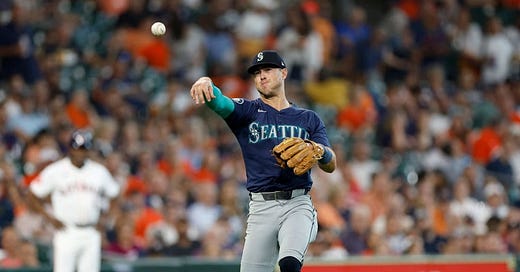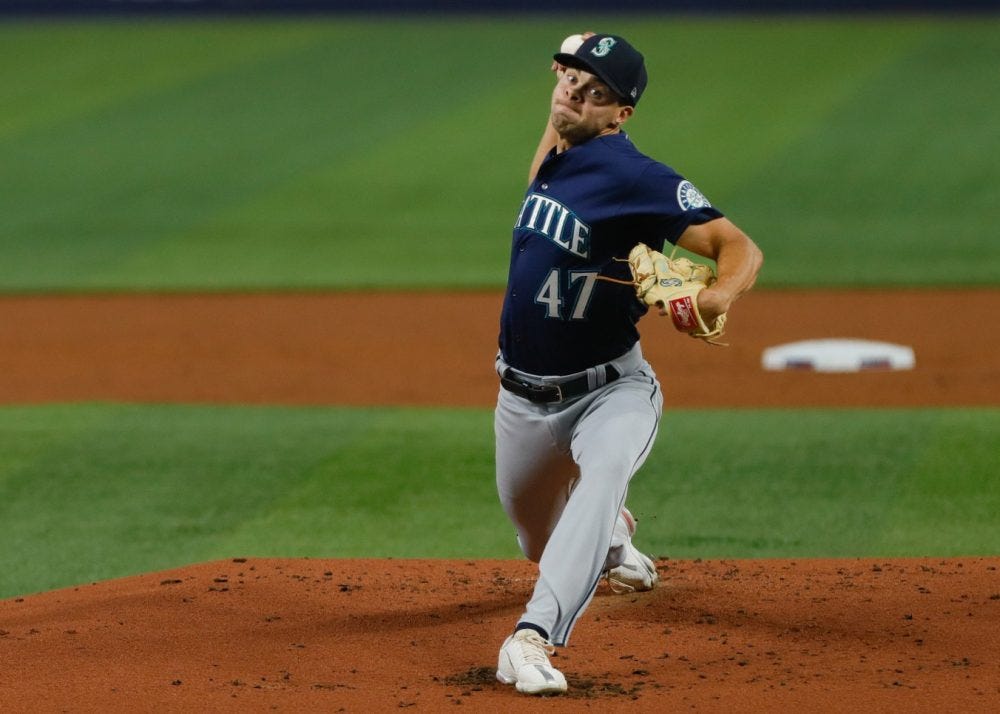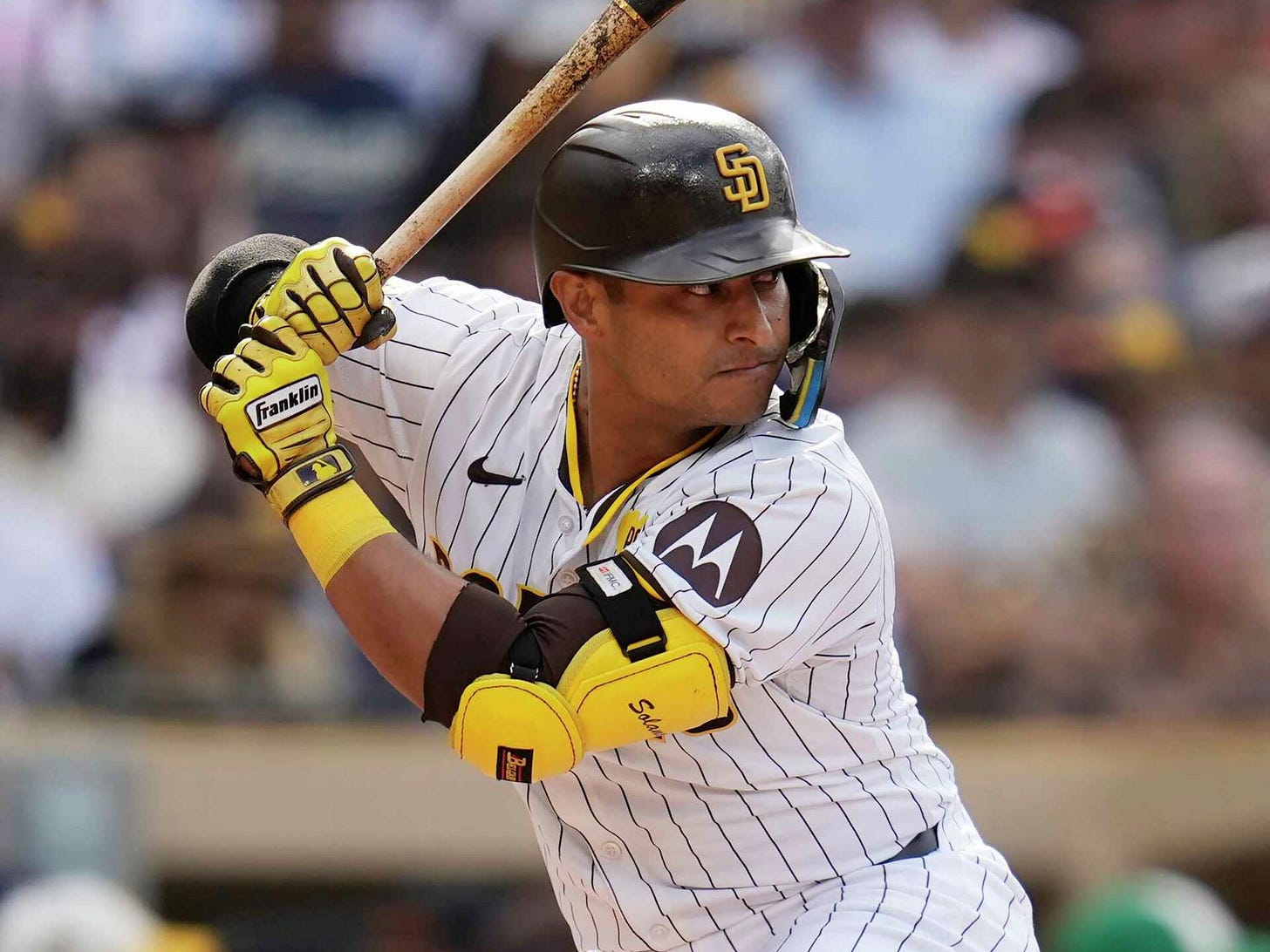Three Stats That Will Tell the Story of the 2025 Seattle Mariners
There are a million things that could go wrong for the 2025 Mariners, but these 3 stats will determine how good the club will be.
The 2025 Seattle Mariners will likely enter the season as a fringe playoff contender, the same as the 2024 team. But to avoid the same fate as their counterpart, Seattle will need to improve in some key areas. Obviously, no one statistic (besides wins) will tell you how good a team actually is. However, if we’re willing to use the 2024 club as a baseline, we can start to see where the club needs to improve and where these improvements can have the biggest impact. The Mariners need to be better in these three categories to win their first division title in 23 years and if we see significant growth, I think we can see exactly that.
Outs Above Average (OAA): -17 * (23rd)
The Seattle Mariners had world-class starting pitching in 2024 and figure to have similar production again in 2025. The staff boasts the deepest 1-5 in the game and with the natural difficulty of scoring runs at T-Mobile Park, run prevention is the key to success for the 2025 squad.
However, it’s difficult to imagine the starting rotation getting significantly better (though not impossible). So how can Seattle help their offense more in 2025? By showing improvement on defense. The 2024 squad ranked 23rd in baseball in outs above average and while defensive metrics aren’t amazing yet, they basically all point at a Mariners team that was, at best, just okay in 2024.
Thankfully, the Mariners are well on their way to above-average defense. They boast the platinum glove catcher, a gold glove utility man set to become the everyday second baseman, and a gold glove quality glove in center fielder Julio Rodriguez. Victor Robles should grade out as well above average in a corner outfield spot. J.P. Crawford has a gold glove on his resume and saw his best defensive year in 3+ years in 2024.
However, the big questions remain on the left side of the diamond. Jorge Polanco will take the place of Josh Rojas. For all of his struggles at the plate, Rojas was a great defender at third. And while Moore is a massive upgrade to the team’s second base defense, they may have given it all back at third. Randy Arozarena is a poor defender in left field as well, though Seattle could use Luke Raley late in games to mitigate some of those issues. As currently comprised, the bench offers no above-average gloves for late-game use, leaving the team vulnerable to poor defensive alignments late in games.
Reliever Win Probability Added (WPA): -0.22 (21st)
It might surprise some Mariners fans to learn how bad Seattle’s bullpen was in 2024. But using a more traditional stat like WAR isn’t fair to a bullpen that will likely have to cover fewer innings than almost every team in the game. Runs are such a premium for Seattle that they can’t afford to give them up late when the offense has fewer bites at the apple against the better arms of a bullpen.
The pen had a real problem with home runs, a symptom of the lack of high-leverage arms in the pen. The Mariners relied heavily on Andres Munoz, thanks to the lengthy injuries of Gabe Speier, Matt Brash, and Gregory Santos. Speier and Santos are healthy now and should provide some high-leverage options for Seattle and the club is optimistic Brash can return in the first 4-6 weeks. This healthy trio should solve a lot of the problems for Seattle, but the team cannot afford to have a bad bullpen as it is currently constructed.
In 2023, the Mariners bullpen ranked 9th in WPA and a return to the top 10 would do wonders for a team that needs to scrape and claw for every run they score. If a starter leaves the game with a lead, Seattle will need to win far more of those games in 2025 to get back to the postseason. A top 10 unit in this stat likely means a 90-win campaign for Seattle.
Batting Average (BA): .224 (29th)
That’s right, batting average. Bet you didn’t see that coming, did ya? Well make no mistake, on-base percentage is still the much more important stat. But when you look at the 2024 season, Seattle ranked 4th in BB% (walk percentage), so drawing walks wasn’t the problem. If Seattle has a walk rate between 9-10% as they did last year, they’re actually in great shape. But the team needs more hits to take advantage of the walks.
Seattle ranked 12th in homers last season, an impressive feat considering the difficulties of playing half your games in T-Mobile Park. But the .224 batting average zapped the impact of those walks and homers. After a change in approach on August 23rd, Seattle hit .256, good for 7th in MLB in that time span. Seattle finished fifth in runs scored in that time frame and the OBP jumped to fourth in the game without a massive jump in BB%.
Seattle appears to finally understand that playing in T-Mobile Park doesn’t lend itself well to the 3 true outcome offenses. Seattle added Donovan Solano to replace Justin Turner and is hoping a full season of Victor Robles and Randy Arozarena will help in this department. If Seattle can run even a league-average batting average while maintaining their ability to draw walks, they should have a more consistent offense in 2025.





